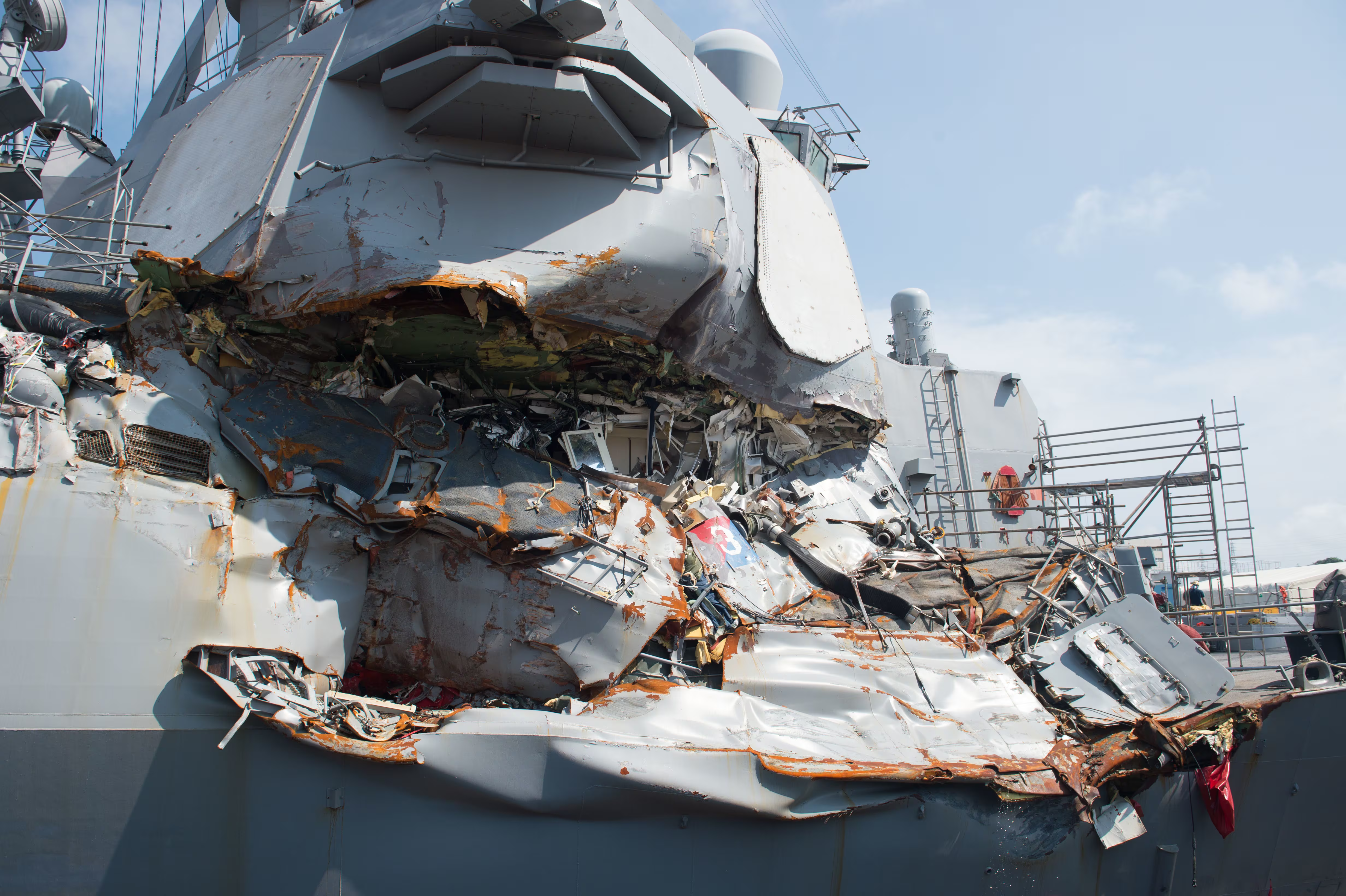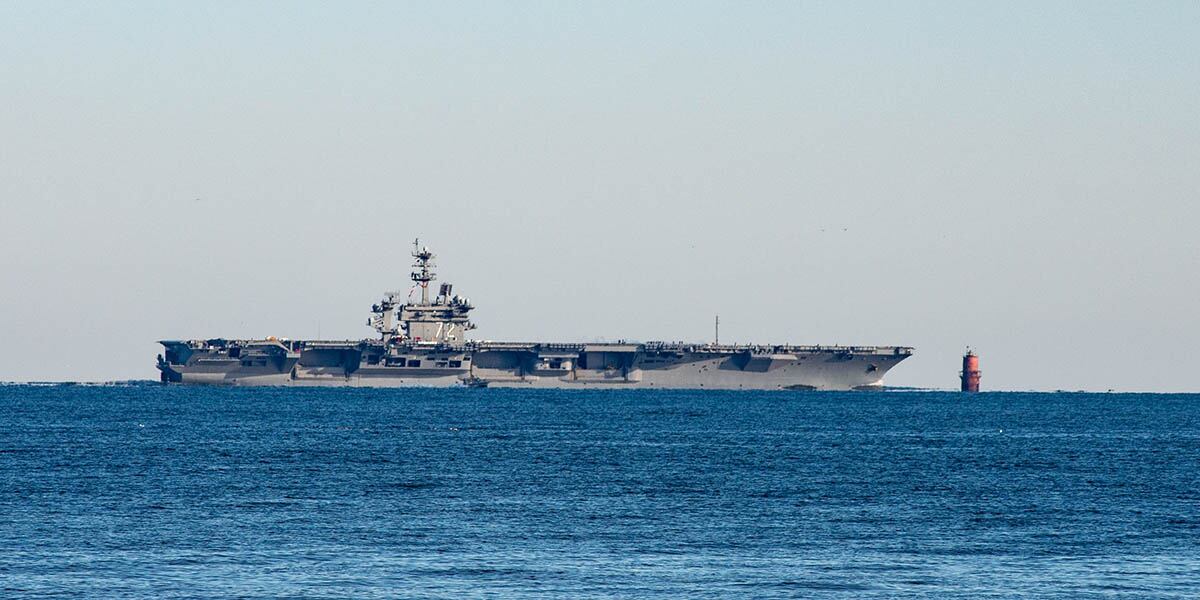ON BOARD THE GUIDED-MISSILE DESTROYER TRUXTUN — Sometimes a VCNO just has to see it for himself.
On Thursday, Vice Chief of Naval Operations Adm. Bill Moran popped into Naval Base Norfolk to peek at ongoing reforms in the wake of two fatal 2017 collisions in the Western Pacific.
It’s been 13 months since the Navy debuted its Readiness Reform and Oversight Council to distill lessons from multiple probes into the disasters involving the Truxtun’s sister guided-missile destroyers Fitzgerald and John S. McCain and a pair of commercial vessels that combined to leave 17 sailors dead.
Co-chaired by Moran, it continues to oversee implementation of the late 2017 Comprehensive Review and Strategic Readiness Review reports. Navy leaders say that they adopted 103 recommendations for fixing the surface fleet and 91 actions have been completed.
But VCNO wanted to hear from sailors, and he’s planning a trip to visit with San Diego personnel, too.
“I heard things that gave me a lot of confidence that we’re heading in the right direction,” Moran told reporters gathered on the Truxtun’s fantail. “But all of them cautioned me, rightfully, that we’re still early into this and we’ve got to give this time.”
And the Navy doesn’t want to declare mission completed until the sea service has completed “a lot of data that show these changes are having a good impact," he added.
Moran pointed to Norfolk’s high tech training simulators as critical tools to hiking readiness and drilling watchstanders in case they encounter similar conditions at sea. While he’s heard glowing reviews about “bridge resource management training” on simulators that incorporates a Combat Information Center, he groused that commands here must stand in line to get the instruction.
“I was not happy, not pleased, to see the lack of capacity in the simulation that exists here on the waterfront,” Moran said.
VCNO said that he was told there’s only one trainer that allows bridge and CIC teams to train together and that was “nowhere near enough” what the Navy in Norfolk needed.
Investigators probing the Fitzgerald collision determined that a dysfunctional relationship between bridge watchstanders and the CIC was a key cause of the tragedy that claimed the lives of seven American sailors.
Moran said that a permanent solution to the training glut at the Norfolk simulator can be fixed by building a larger facility, a Navy initiative he said is “fully funded” but that’s also “two to three years away.”
A similar lack of simulator capacity dogs San Diego but that facility is being renovated now and should be ready in about a year, according to VCNO.
“In the interim, we’ve got to make up some capacity,” Moran said. “That’s one I’m taking back with me, I don’t think we have that right, yet.”
Similar trainers are planned to be erected in other stations where “we have ships,” Moran said, including Florida’s Mayport, Washington’s Everett, Spain’s Rota and Japan and Bahrain so that officers and their sailors can “do a lot more reps and sets,” Moran said.
“There’s a lot of hunger for it here, right now and we’re not able to service the need and that’s something we’ve got to fix," VCNO said.
RELATED

A key success has been providing senior mariners from Military Sealift Command to train crews both during simulations and on board warships, teaching bridge and CIC teams how commercial vessels navigate the seas.
Calling the instructors “mariner senior mentors,” VCNO said that they highlight “what a commercial vessel is thinking about as it’s going through the waterways and how it could conflict with what we think we have to do," an “invaluable” perspective that can help prevent collisions.
Moran also praised what he believes is a culture shift inside the Navy’s Afloat Training Groups across the globe. In the past, they operated autonomously, which meant that training and procedures weren’t always shared across the service, but VCNO said standardization “between coasts is absolutely necessary” now.
“If we’re going to fight together we have to be trained together so we’ve got to have the same standard so we aren’t guessing what the other guy is doing," Moran said.
Too often the groups became ensnared in merely grading warships and fell short in actually training and mentoring the crews, but Moran said the emphasis now is on the “big 'T' in training.”
“I see a much improved attitude that says ‘let’s get after training’ and make sure the guys are ready when we need the ship," VCNO said.
RELATED

Moran pointed to the Norfolk-based aircraft carrier Abraham Lincoln’s Composite Training Unit Exercise last month in the Atlantic Ocean, with “crews and aviators all being tested” and “put under tension” unlike anything the sea service has seen in recent years, with sailors who "like being challenged.”
“I’m very encouraged by what I’m seeing down here in Norfolk and I look forward to getting out to San Diego in the not to distant future and see how they’re doing,” VCNO added. although he declined to assign a grade to those efforts, saying those marks “could be interpreted in a lot of different ways.”
What’s important is that the changes are occurring and over time seem likely to develop “into the kind of effective training and operations we need,” he said.
Moran said he’s “very confident” that the reforms have helped the fleet, with crews and their commanders feeling safer as a result.
“It is really a fundamental shift from how we’ve done training from the past," he said.
Mark D. Faram is a former reporter for Navy Times. He was a senior writer covering personnel, cultural and historical issues. A nine-year active duty Navy veteran, Faram served from 1978 to 1987 as a Navy Diver and photographer.





